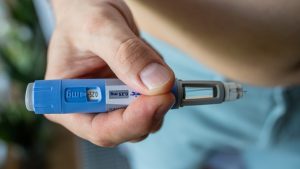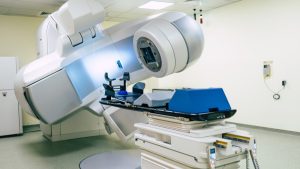Articles / Painful IUD insertions?

“Ask anyone who’s had an IUD – a long-lasting contraceptive device – and they’ll probably tell you about the pain of getting it inserted.” That’s how triple j’s Hack promoted its investigation into women’s reports of pain while getting an IUD inserted.
In October, the ABC’s Background Briefing collaborated with Hack to run a longer story, ‘The tiny device that can cause huge pain,’ which was rebroadcast on 20 January as one of their favourite episodes of 2022.
The report overwhelmingly described extremely painful procedures with women not being properly informed of what to expect or what options were available.
But how common are the “excruciating experiences” highlighted in the Background Briefing episode? And what can doctors do to assuage women’s concerns?
Unbalanced coverage
Sexual health physician Dr Terri Foran says that while most women have their IUD inserted without problems, there are specific risk factors that were barely touched on in the Background Briefing report that can increase the likelihood of pain and discomfort.
Until about 10-15 years ago, most women getting IUDs had already had babies, and in that group “it tends to be a fairly simple procedure because the cervix is dilated,” she says.
However, the demographics have shifted, and far more young women are getting IUDs.
“Some of the young women who come to see me have never even had a speculum examination beforehand,” she says, adding that any surgical procedure, no matter how well done, will cause some cramping.
Risk factors for a difficult insertion
Rather than telling women that the procedure isn’t going to hurt, Dr Foran’s strategy is to tell them about the research.
She points to an Australian study of almost 1000 procedures which quantified the likelihood of a “difficult” insertion (as defined by the doctors) and identified key risk factors.
The study found that 90% of successful insertions were rated as “easy” by the doctor—including about 80% in women who had never given birth.
But about 20-25% of women who had never had a baby experienced either a difficult or ‘abandoned’ insertion.
The IUDs were successfully inserted 95% of the time, but in about 4.5% of cases, the doctor ‘abandoned’ the insertion for various reasons, and this was much more likely to occur in women who had never had a baby, or who had only had a Caesarean section.
Complications occurred in 3.6% of the women with completed procedures, and were more likely in those who had never given birth.
Several of the women interviewed for Background Briefing said they experienced heavy period pain, which can also make them more likely to experience cramping when the device is inserted, Dr Foran says.
How to talk about the potential pain
“I think the most important thing is to be honest and not downplay the discomfort, but it’s a fine line, because you don’t want to up-play it either,” Dr Foran says. “You don’t want to scare so many women away with terrible stories that they wouldn’t consider it.”
“So, I think the tip is to tell women that it’s variable, and to let any woman who has had babies know that for the vast majority of those women, it’s a very easy and relatively painless insertion—not all, but for most.”
“And for women who haven’t had babies, always at least discuss the option of having sedation—and have referral networks in place that allow you to put that person in touch with someone who can take them on the next step of the journey and then they can return to you for aftercare.”
“I explain the procedure in detail, what I’m going to do, how I’m going to do it, what she can expect, and I explain that at any stage if she feels it’s too much for her that we can arrange for this to be done under sedation.”
Local anaesthetic or sedation?
One confusing bit of the ABC reporting is that many of the women say they regret not having had a general anaesthetic—but Dr Foran says that’s uncommon, and sedation is much more common—and can make a big difference.
“It makes it a lot easier. It reduces pain substantially, but it also reduces anxiety and tends to mean that you don’t remember very much of what went on,” she says.
Many younger women in particular are opting for sedation, and Dr Foran says she discusses it as an option with women who’ve had bad period pain and haven’t had children, as well as with women who’ve previously had a difficult experience with insertion.
While local anaesthetic is most common, it does have some limitations. The local stings, and the more you use, the more it can tend to sting. It also only works down in the lower part of the uterus.
“It does nothing for the cramping, which is what most people complain about when you actually insert the IUD,” she explains.
Another option somewhere in between a local anaesthetic and full sedation is the ‘green whistle,’ an inhaled analgesic that delivers some light sedation and can help reduce anxiety, “but it’s absolutely useless if there’s a technical reason why we can’t get the IUD in in the first place. It doesn’t relax the cervix,” she says.
In Dr Foran’s experience, sedation is effective, but cost can be a barrier. Wait times are often long at public hospitals and very few offer a sedation procedure in a minor obs theatre, so she often refers women who elect for sedation to private termination clinics that also provide other services. But women can expect to pay about $300 out of pocket, and they are generally not an option outside of major cities.
Clinician experience matters
The aforementioned study found that doctors who had performed less than 100 procedures during the 12-month study period were more likely to have difficult insertions.
Dr Foran urges GPs to make sure they’re doing enough IUD insertions to be confident and are current in their knowledge.
“Know your own limitations and if you’re not doing very many of them, don’t do them just because you can, I think it’s important to refer on.”
It can also help to develop a network of other IUD inserters who you can ring and chat about patients, talk about experiences and share tips.
Many factors influence pain, including how supported the person feels
“There’s a real push from those who are advocating greater use of an IUD to assess and insert at the same time, which is great from a contraceptive point of view. But I think it’s a bit challenging sometimes to establish a really good rapport with someone, take a really good history, and then continue to put the IUD in, all in one go,” Dr Foran says.
“I think that sometimes establishing that rapport and that trust in an initial consultation, and then making plans to insert after discussion or making plans to refer if the woman is really nervous— I think, for me, as a clinician, that’s a better way of doing it.”
The bottom line
“I think the device is too beneficial and too important as an option for it to sort of collapse on the rocks of bad publicity, and what I think is probably the experience of a minor number of women,” Dr Foran sums up.
“I just wish they’d given the other the other perspective. I mean, it shouldn’t be that hard to find somebody who had an IUD inserted really easily and thinks it’s the best thing since sliced bread and would have it done again and would recommend it. There was none of that… I’ve got patients who are up to their fifth IUD and think it’s fabulous.”
Based on this educational activity, complete these learning modules to gain additional CPD.

Menopausal Hormone Therapy - What Dose of Estrogen is Best?

Cardiovascular Benefits of GLP1s – New Evidence

Oral Contraceptive Pill in Teens

RSV and the Heart



Modified but kept in place
Eliminated entirely without replacement
Maintained as is
Completely replaced with an alternative system
Listen to expert interviews.
Click to open in a new tab
Browse the latest articles from Healthed.
Once you confirm you’ve read this article you can complete a Patient Case Review to earn 0.5 hours CPD in the Reviewing Performance (RP) category.
Select ‘Confirm & learn‘ when you have read this article in its entirety and you will be taken to begin your Patient Case Review.
Menopause and MHT
Multiple sclerosis vs antibody disease
Using SGLT2 to reduce cardiovascular death in T2D
Peripheral arterial disease
